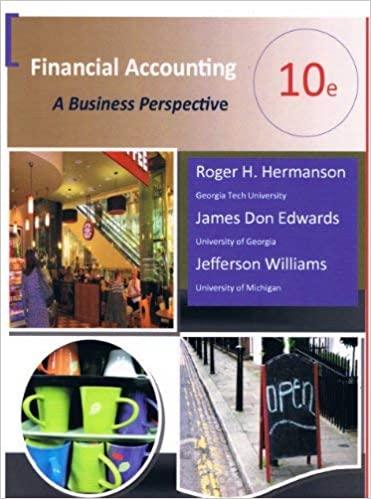4 answers reguired

Luzadis Company makes furniture using the latest automated technology. The company uses a job-order costing system and applies manufacturing overhead cost to products on the basis of machine-hours. The predetermined overhead rate was based on a cost formula that estimates $1,040,000 of total manufacturing overhead for an estimated activity level of 80,000 machine-hours. During the year, a large quantity of furniture on the market resulted in cutting back production and a buildup of furniture in the company's warehouse. The company's cost records revealed the following actual cost and operating data for the year: 71.000 990,000 $ Machine-hours Manufacturing overhead cost Inventories at year-end materials Work in process (includes overhead applied of 573,840) Pinished goods includes overhead applied of $147,680) Coat of goods sold includes overhead applied of $701, 480) $ 11,000 $ 156.000 S 312,000 $ 1.492.000 Required: 1. Compute the underapplied or overapplied overhead. 2. Assume that the company closes any underapplied or overapplied overhead to Cost of Goods Sold. Prepare the appropriate journal entry. (If no entry is required for a transaction/event, select "No Journal entry required" in the first account field.) 3. Assume that the company allocates any underapplied or over appliedoverhead proportionally to Work in Process, Finished Goods, and Cost of Goods Sold. Prepare the appropriate journal entry (If no entry is required for a transaction/event, select "No Journal entry required" in the first account field.) 4. How much higher or lower will net operating income be if the underapplied or overapplied overhead is allocated to Work in Process Finished Goods, and Cost of Goods Sold rather than being closed to Cost of Goods Sold? Complete this question by entering your answers in the tabs below. Reg Reg 2 Req3 Reg 4 Compute the underapplied or overapplied overhead. Reg 2 > and Cost of Goods Sold. Prepare the appropriate journal entry. (If no entry is required for a transaction/event, select "No journal entry required in the first account field.) 4. How much higher or lower will net operating income be if the underapplied or overapplied overhead is allocated to Work in Process Finished Goods, and Cost of Goods Sold rather than being closed to Cost of Goods Sold? Complete this question by entering your answers in the tabs below. Reg 1 Reg 2 Reg 3 Reg 4 Assume that the company closes any underapplied or overapplied overhead to Cost of Goods Sold. Prepare the appropriate journal entry. (If no entry is required for a transaction/event, select "No journal entry required in the first account field.) View transaction list Journal entry worksheet Record the entry to close the balance in the manufacturing overhead account to the cost of goods sold account. Note: Enter debits before credits Debit General Journal Event Credit View general Journal Record entry Clear entry Finished Goods, and Cost of Goods Sold rather than being closed to Cost of Goods Sold? Complete this question by entering your answers in the tabs below. Reg 1 Reg 2 Reg 3 Reg 4 Assume that the company allocates any underapplied or over appliedoverhead proportionally to Work in Process, Finished Goods, and Cost of Goods Sold. Prepare the appropriate journal entry. (If no entry is required for a transaction/event, select "No journal entry required in the first account field.) View transaction list Journal entry worksheet Record the allocation of the underapplied/overapplied overhead to various accounts. Note: Enter debits before credits Event General Journal Debit Credit Record entry Clear entry View general journal company's warehouse. The company's cost records revealed the following actual cost and operating data for the year: 71.000 990,000 $ Machine-hours Manufacturing overhead cost Inventories at year-end RAW materials Work in process (includes overhead applied of $73,840) Finished goods (includes overhead applied of $147,680) Cost of goods sold (includes overhead applied of $701, 480) $ 11.000 $ 156.000 $ 312.000 $ 1,482,000 Required: 1. Compute the underapplied or overapplied overhead. 2. Assume that the company closes any underapplied or overapplied overhead to Cost of Goods Sold. Prepare the appropriate journal entry. (If no entry is required for a transaction/event, select "No journal entry required in the first account field.) 3. Assume that the company allocates any underapplied or over appliedoverhead proportionally to Work in Process, Finished Goods, and Cost of Goods Sold. Prepare the appropriate journal entry. (If no entry is required for a transaction/event, select "No journal entry required in the first account field.) 4. How much higher or lower will net operating income be if the underapplied or overapplied overhead is allocated to Work in Process, Finished Goods, and Cost of Goods Sold rather than being closed to Cost of Goods Sold? Complete this question by entering your answers in the tabs below. Reg 1 Reg 2 Req3 Reg 4 How much higher or lower will net operating income be if the underapplied or overapplied overhead is allocated to Work in Process, Finished Goods, and Cost of Goods Sold rather than being closed to Cost of Goods Sold? Not operating income will be the overhead is allocated rather than closed entirely to cost of goods sold.











